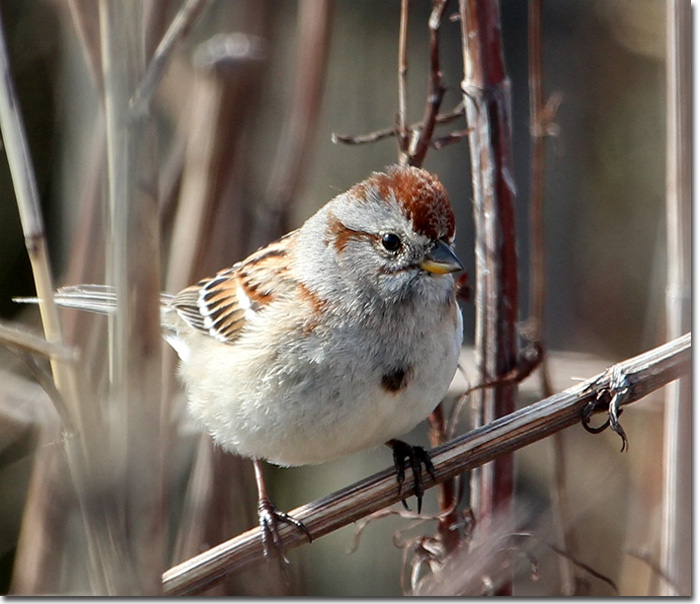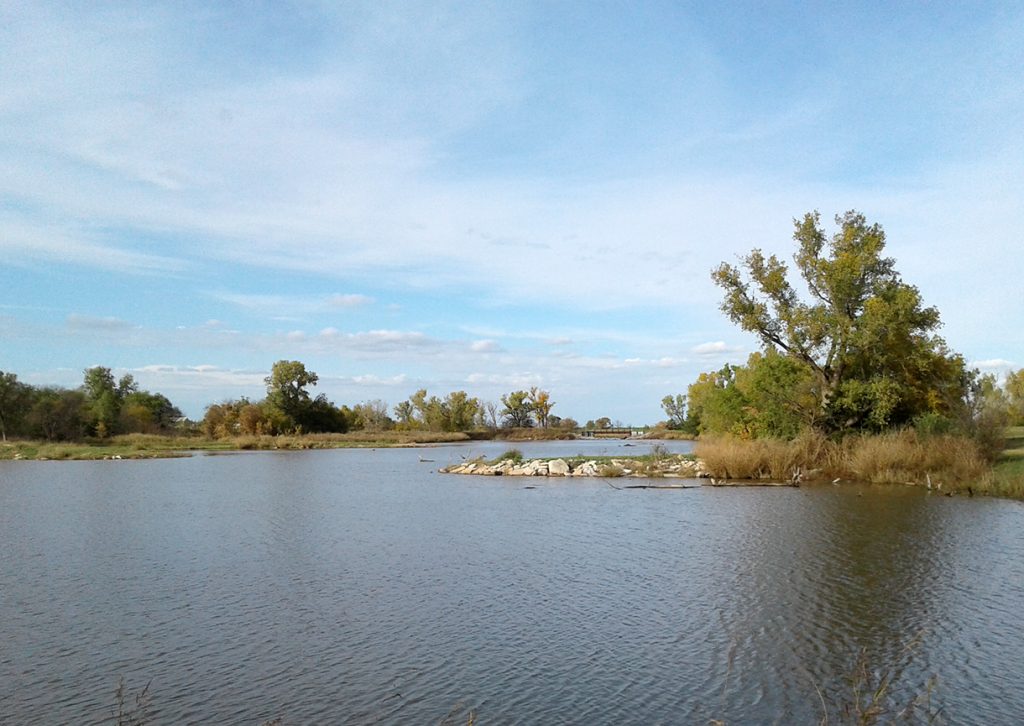LOCATION: Lake Elmer Public Fishing Area; S7, T16N, R7W; Kingfisher County, OK
35.8826871,-97.9950987
Contributed by: Zach Poland
About 55 miles northwest of downtown Oklahoma City, Lake Elmer Public Fishing Area is an under-birded hotspot with potential. It is located near the intersection of N 2810 Rd and E 780 Rd in Kingfisher County. From the city of Kingfisher go 1 mile north on US 81, then 3.5 miles west on E 780 Rd. Alternatively, you can arrive at the lake by traveling 3 miles east of Kingfisher on OK 33, 2 miles north on N 2810 Rd. However, the alternate route is partially on unpaved roads that get messy when wet and includes a low water crossing that can be unpassable after significant rainfall.
To date, over 85 species (https://ebird.org/hotspot/L1955047) have been recorded at Lake Elmer. This species count is fairly low due to its lack of attention by birders, rather than a lack of species diversity. Habitat present at Lake Elmer includes: standing shallow water, tallgrass prairie, brush, wooded lowlands, cedar thickets and large deciduous trees.
Lake Elmer is owned and maintained by the Oklahoma Department of Wildlife Conservation (ODWC). As an ODWC property, a valid Oklahoma hunting or fishing license or Conservation Passport is required for entry (link below). The property includes 139 acres of public land, about 60 acres is covered by the lake. Spotting scopes are unnecessary as binoculars are more than adequate to cover the lake from shore. Restroom facilities and water are not present at Lake Elmer.
Along E 780 Rd on the way to Lake Elmer, look for Horned Larks, longspurs and geese in the winter. Often in the spring, Upland Sandpipers can be heard and seen in the same areas. In the winter, large numbers of sparrows can be found on the east side of the main entrance road going towards the boat ramp.
Below is a list of birds (not exhaustive) that can be observed at Lake Elmer.
 Winter: Tundra Swan (rare), Cackling Goose, Northern Shoveler, Gadwall, Ring-necked Duck, Northern Harrier, Belted Kingfisher, Northern Flicker, Loggerhead Shrike, American Pipit, Golden-crowned Kinglet, Ruby-crowned Kinglet, Pine Siskin, American Tree Sparrow, Fox Sparrow, Western Meadowlark, and Yellow-rumped Warbler.
Winter: Tundra Swan (rare), Cackling Goose, Northern Shoveler, Gadwall, Ring-necked Duck, Northern Harrier, Belted Kingfisher, Northern Flicker, Loggerhead Shrike, American Pipit, Golden-crowned Kinglet, Ruby-crowned Kinglet, Pine Siskin, American Tree Sparrow, Fox Sparrow, Western Meadowlark, and Yellow-rumped Warbler.
Summer: Great Egret, Turkey Vulture, Mississippi Kite, Great Crested Flycatcher, Eastern Kingbird, Scissor-tailed Flycatcher, Barn Swallow, Blue-gray Gnatcatcher, Blue Grosbeak, Indigo Bunting, Painted Bunting, and Dickcissel.
Migration: Snow Goose, Upland Sandpiper, Wilson’s Snipe, Solitary Sandpiper
Year-round residents: Canada Goose, Northern Bobwhite, Mourning Dove, Killdeer, Great Blue Heron, Red-tailed Hawk, Eastern Meadowlark, and Baltimore Oriole.
For local birders interested in county listing, Kingfisher County is somewhat difficult. There is little public land with good habitat diversity relative to the surrounding counties. Lake Elmer offers some of the best access and habitat that the author has found. With more attention from birders at various times of the year, the species list should grow significantly.
Helpful links:
Lake Elmer Map: https://www.wildlifedepartment.com/maps/Elmer%20Lake%20PFA.pdf
ODWC Permit Sales: https://www.wildlifedepartment.com/forget1/OnlineSales.aspx
OWDC Permit Cost and Description: https://www.wildlifedepartment.com/forget1/LicenseDescription.aspx

